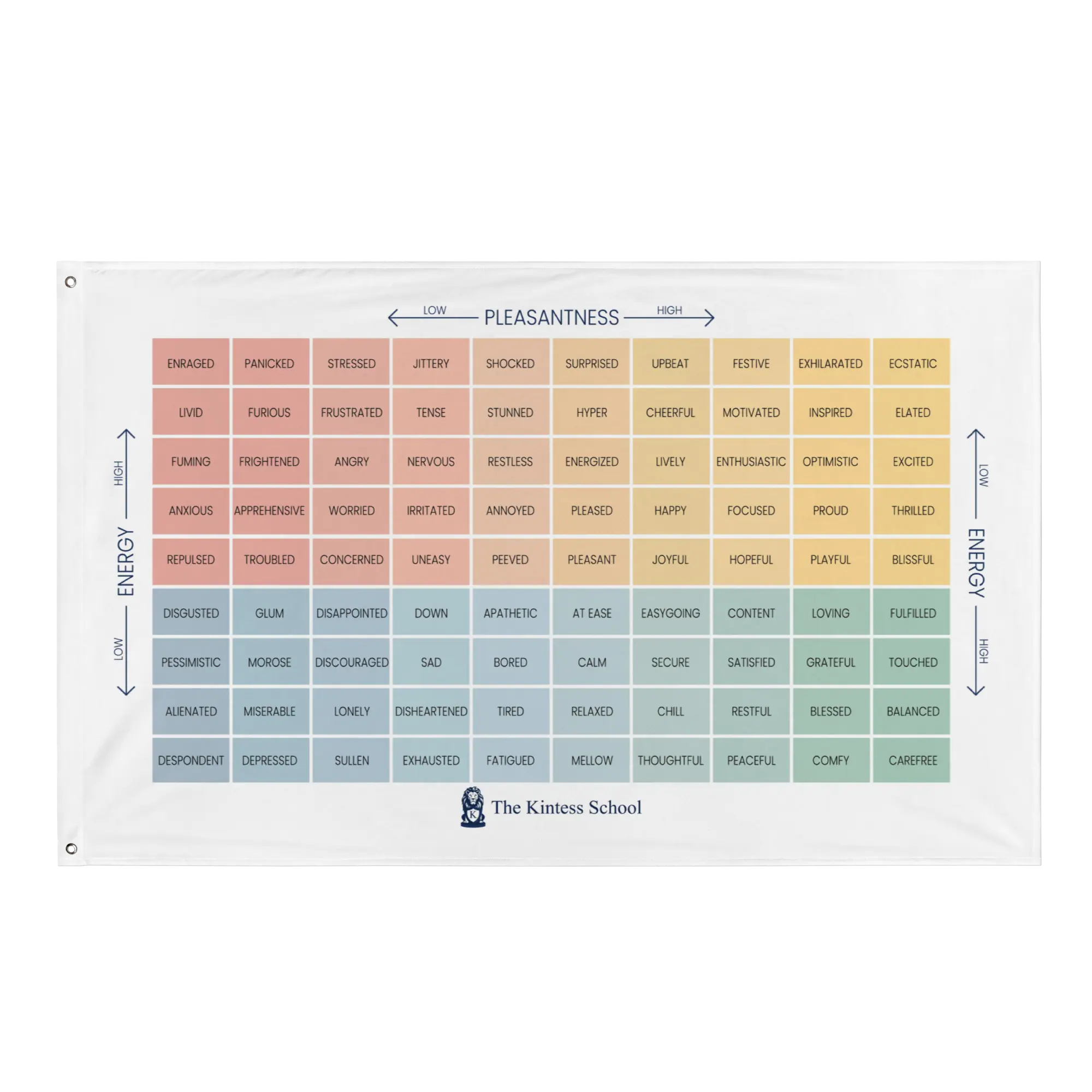About the Mood Meter
The Mood Meter is a tool developed by the Yale Center for Emotional Intelligence to help individuals recognize and label their emotions accurately. It features a grid divided into four color-coded quadrants, each representing a combination of energy and pleasantness levels:
- Red Quadrant: High energy, low pleasantness (e.g., anger, frustration)
- Yellow Quadrant: High energy, high pleasantness (e.g., joy, excitement)
- Green Quadrant: Low energy, high pleasantness (e.g., calm, contentment)
- Blue Quadrant: Low energy, low pleasantness (e.g., sadness, fatigue)

By plotting their current feelings on the Mood Meter, individuals enhance self-awareness and develop strategies for effective emotional regulation.
Complementing the Mood Meter, the RULER method is a comprehensive approach to cultivating emotional intelligence. RULER stands for Recognizing, Understanding, Labeling, Expressing, and Regulating emotions. This method equips individuals with skills to identify emotions in themselves and others, comprehend their causes and effects, articulate feelings with a nuanced vocabulary, express emotions appropriately, and manage them constructively. Implementing RULER in educational settings has been associated with improved academic performance, enhanced social skills, and reduced anxiety among students.
Together, the Mood Meter and RULER method provide practical tools and frameworks for individuals to navigate their emotional experiences, fostering personal growth and well-being.
Frequently Asked Question
-
Research indicates that implementing the RULER method in schools leads to positive outcomes, such as improved academic performance, better quality relationships, and reduced bullying and aggressive behavior.
Emotional intelligence (EI) is the capacity to recognize, understand, manage, and effectively utilize emotions in oneself and others. Two prominent tools developed to enhance EI are the Mood Meter and the RULER method, both originating from the Yale Center for Emotional Intelligence.
The Mood Meter: A Tool for Emotional Awareness
The Mood Meter is a visual instrument designed to help individuals identify and label their emotions accurately. It consists of a colorful grid divided into four quadrants, each representing a different combination of energy and pleasantness levels:
- Red Quadrant: High energy, low pleasantness (e.g., anger, frustration)
- Yellow Quadrant: High energy, high pleasantness (e.g., joy, excitement)
- Green Quadrant: Low energy, high pleasantness (e.g., calm, contentment)
- Blue Quadrant: Low energy, low pleasantness (e.g., sadness, fatigue)
By plotting their current feelings on the Mood Meter, individuals gain insights into their emotional states, fostering greater self-awareness and aiding in emotional regulation. This practice encourages mindfulness and can improve decision-making and interpersonal relationships.
The RULER Method: A Comprehensive Approach to Emotional Intelligence
Building upon tools like the Mood Meter, the RULER method offers a systematic approach to developing emotional intelligence. RULER is an acronym encompassing five key skills:
- Recognizing: Identifying emotions in oneself and others through facial expressions, body language, and vocal tones.
- Understanding: Comprehending the causes and consequences of emotions, which provides context to feelings and behaviors.
- Labeling: Assigning precise vocabulary to emotions, enhancing communication and self-awareness.
- Expressing: Conveying emotions appropriately across different contexts and cultures, ensuring expressions are socially acceptable and constructive.
- Regulating: Implementing strategies to manage emotions effectively, promoting emotional balance and well-being.
The RULER method is implemented through several core tools and practices:
- The Charter: A collaborative document created by members of a community (e.g., a classroom or workplace) outlining how they aspire to feel and the behaviors that will support those feelings.
- The Mood Meter: As previously discussed, this tool assists individuals in recognizing and labeling their emotions.
- The Meta-Moment: A brief pause between an emotional trigger and response, allowing individuals to consider their best selves and choose constructive reactions.
- The Blueprint: A guide for reflecting on and resolving conflicts by analyzing emotional experiences and developing empathetic solutions.
Research indicates that implementing the RULER method in educational settings leads to improved academic performance, enhanced social skills, and reduced anxiety among students. Educators trained in RULER also report greater job satisfaction and less burnout. Beyond schools, organizations adopting RULER have observed better teamwork, increased employee engagement, and a more positive workplace culture.
Incorporating tools like the Mood Meter and the RULER method into daily routines empowers individuals to navigate their emotional landscapes effectively. By honing these skills, people can foster healthier relationships, make informed decisions, and cultivate a more fulfilling personal and professional life.